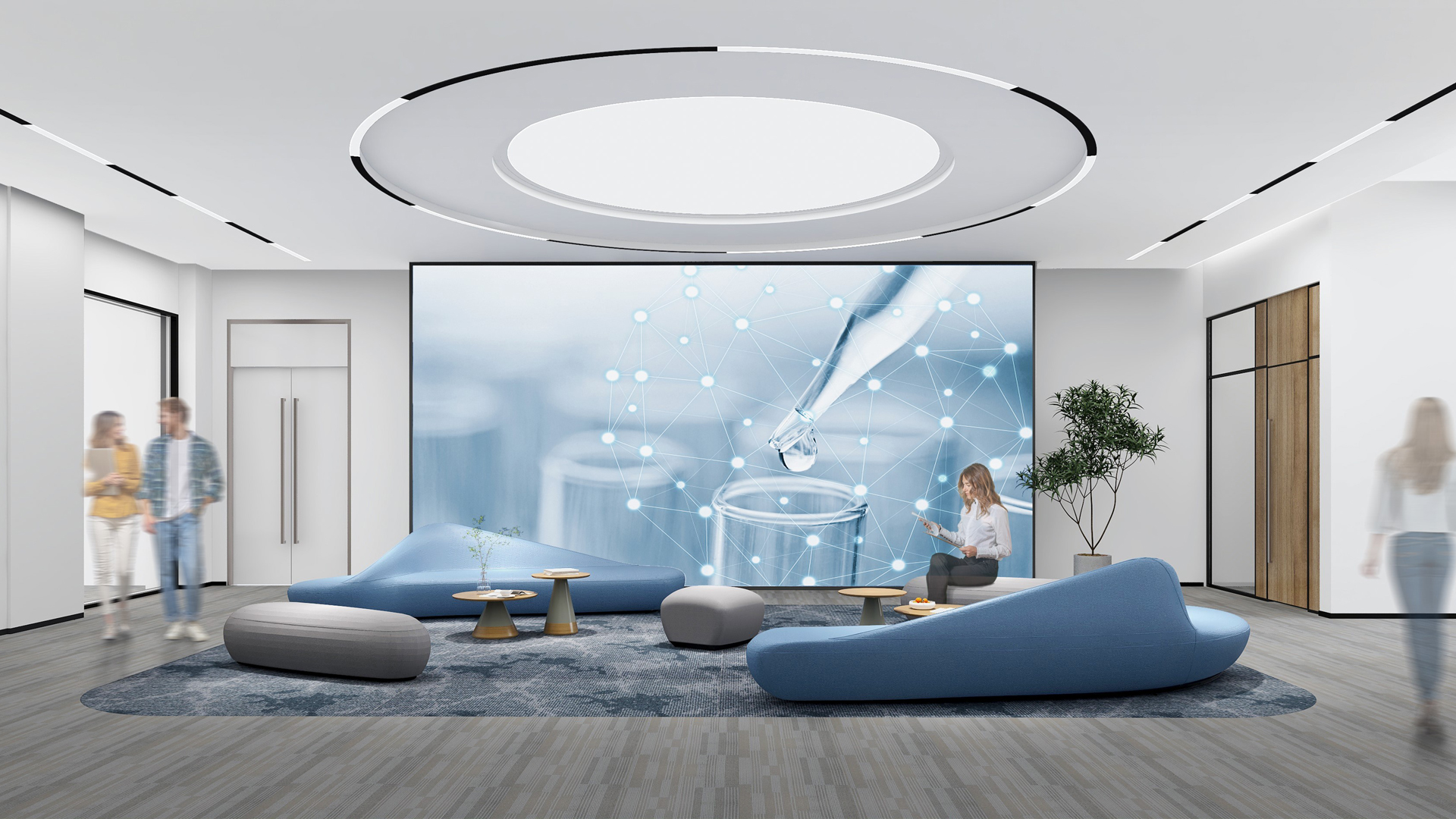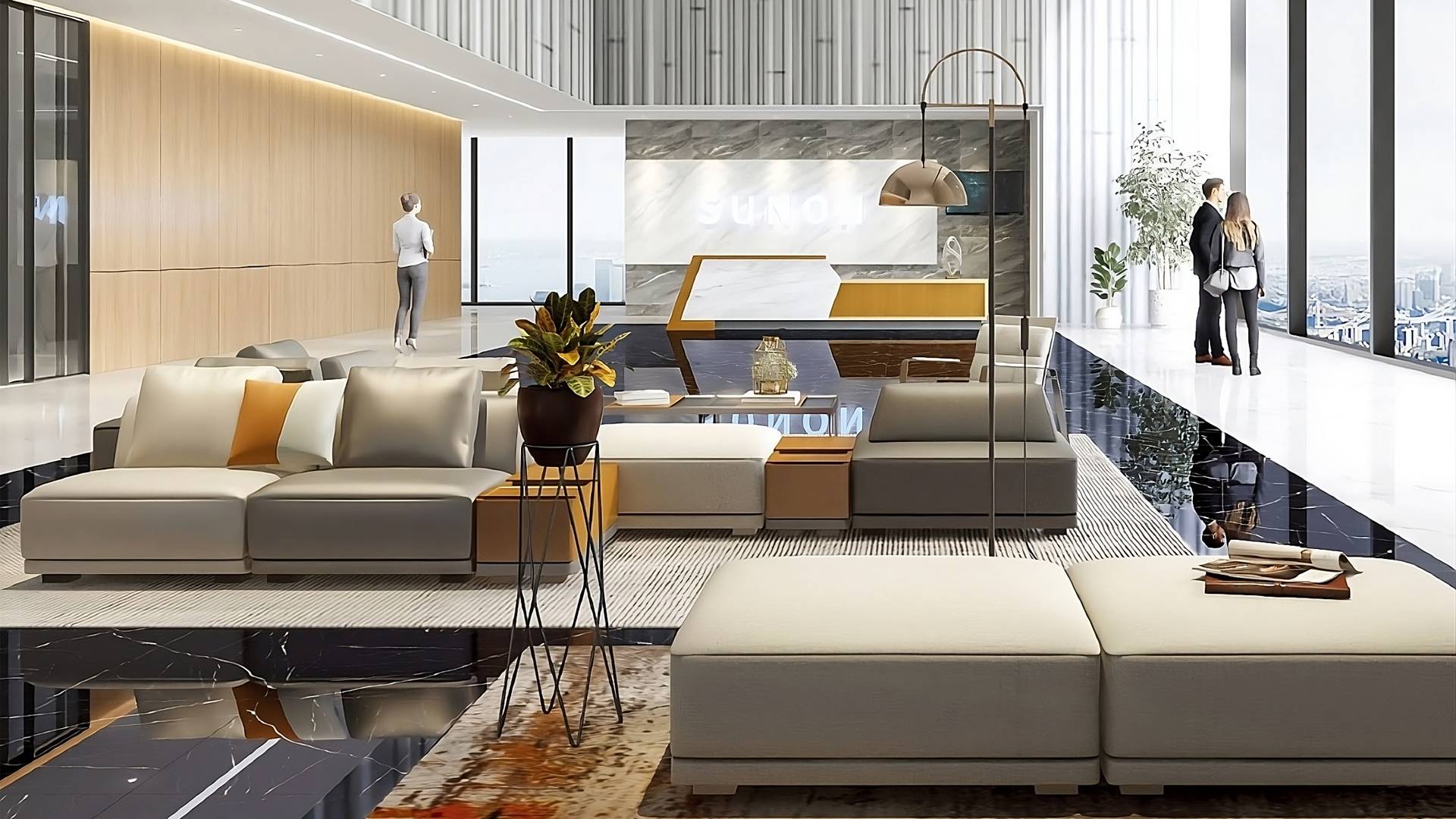-
People go to the office not just to work but also to engage in social spaces. Even as hybrid schedules continue to dominate, in-person interactions now carry a renewed significance: human connection. A well-designed social space can increase productivity, motivation, and the likelihood that individuals contribute their best by 3.5 times. Never underestimate the impact of these interpersonal interactions at work, especially in today’s environment.
Why go to the office? The answer lies in the power of social spaces. These areas are designed to foster comfort, relaxation, and a sense of home—beyond just work tasks. Social spaces are essential for building company culture and nurturing connections, offering spots where people can have lunch, take a break, or engage in informal conversations away from their desks. Workers across generations value these areas for promoting social cohesion, making them a strategic tool for organizations.
-
Spaces designed for social cohesion
Businesses prosper when there is social cohesion. It is about people getting to know one another, developing bonds with coworkers, and experiencing a sense of ownership over their job. It gives people a sense of worth and purpose in their job. Social spaces that enable people to connect personally contribute to the development of a feeling of community, and the environments in which they interact shape an organization’s culture. The following five space design concepts improve culture and boost employee well-being, including a sense of connection and belonging, and may be applied to almost any office setting.
-
Soft seating matters
When creating spaces to connect, the proper seating is crucial. The chair someone is sitting on directly affects how comfortable they feel, which in turn may affect intimacy and involvement. A calm and inviting ambiance that promotes informal discussion and socialization may be created by using comfortable sitting options, including couches, lounge chairs, and bean bags. Offering a range of seating alternatives may accommodate various tastes and requirements, fostering a friendlier and inclusive workplace for all employees. Particularly when paired with acoustic panels or screens to lessen noise drifting to focus workstations, modular soft seating systems provide you the opportunity to design a piece to match the demands of your office.
-
Casual collaboration
Larger companies may have space for booths, touchdown zones, or library-like spaces — settings inside a workstation that promote spontaneous connection, encourage more casual interactions, and eventually give people an opportunity to reconnect. An open-plan office’s simple touchdown areas provide a perfect spot for brief catch-ups and chat without having to stand around your desk. If space is limited, it can serve as both a guest reception area and a colorful accent in your office. A richer, more layered connection will be facilitated by attractive, enjoyable social areas combined with well-appointed concentration space, which can counteract (and possibly even overcome) the inhibitions that lead individuals to work from home.
-
Learning spaces
In terms of culture, onboarding, and creating social capital, flexible places that permit hybrid and in-person training may connect the two. In addition to that, if a public meeting place is made specifically for learning, it may be quickly energized by hosting TED-style speeches and roundtable discussions. These spaces are made to facilitate conversation and hold plenty of people.
-
Communal dining
A traditional option is communal dining rooms, which provide employees a place to congregate and communicate without necessarily having a goal in mind. The ideal setting for employees to network with persons outside of their immediate teams is communal dining rooms. Additionally, it encourages people to walk around during the workday and alter their posture when eating their lunch rather than doing so at their workstations.
-
Homely feel
Resimercial design—a fusion of “residential” and “commercial”—is a superb illustration of a homely style. It incorporates certain elements of the home into modern offices. Comfortable seating, calming ambient lighting, homey accents like rugs and lamps, and textures that seem cozy and familiar are common elements of residential design. These areas have numerous uses and may be used for light cooperation and communication as well as for relaxation, giving businesses the chance to design offices that support human connections.
-
Products
 Desks + Workstations
Desks + Workstations StoragePanel + Space Division
StoragePanel + Space Division Accessories
Accessories - Space
- Inspiration
- Sustainability
- Resource
- About Us
-
Products
 Desks + Workstations
Desks + Workstations StoragePanel + Space Division
StoragePanel + Space Division Accessories
Accessories - Space
- Inspiration
- Sustainability
- Resource
- About Us
- Showrooms
- Dealer Login
- Contact













